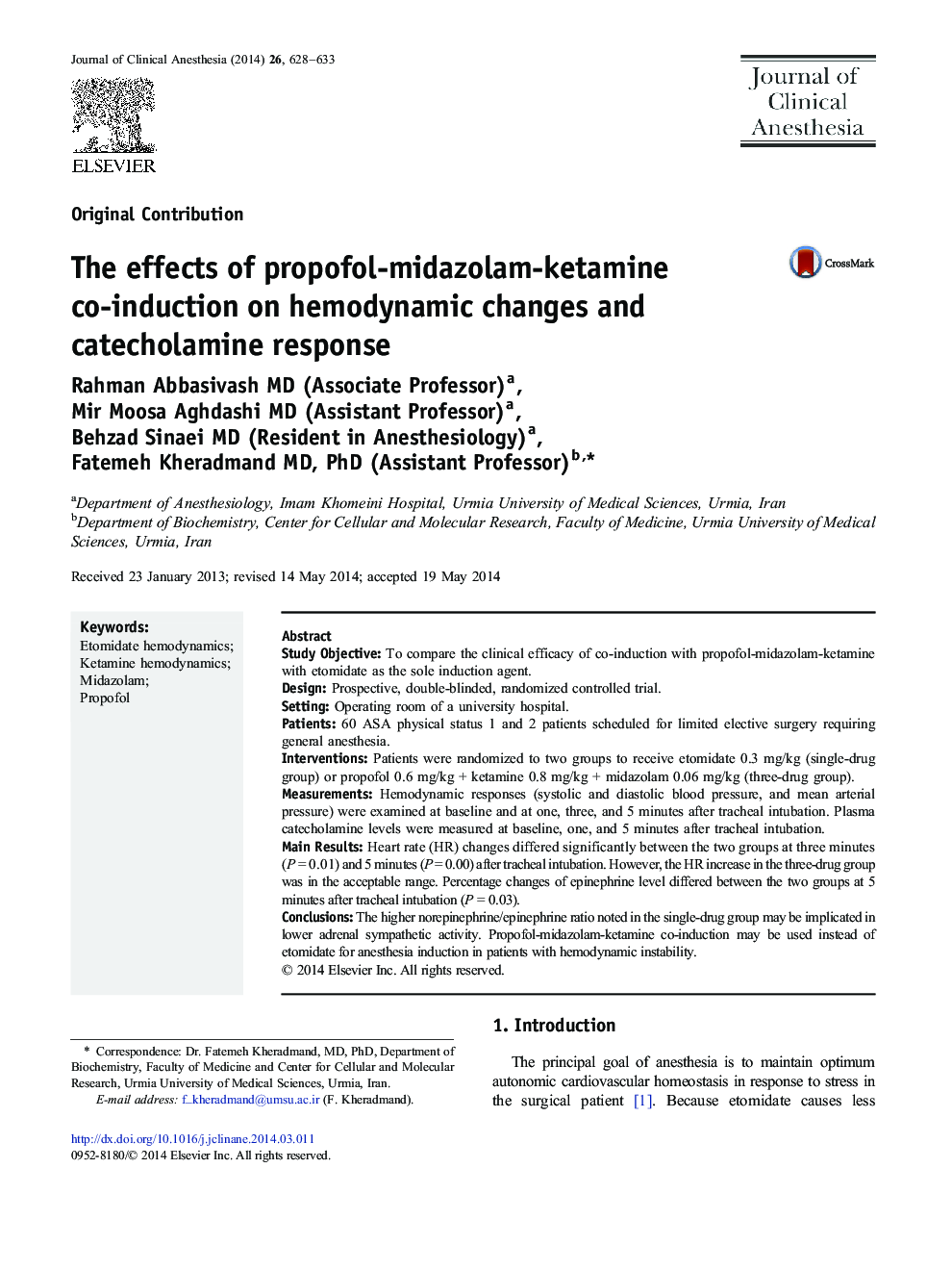| Article ID | Journal | Published Year | Pages | File Type |
|---|---|---|---|---|
| 2762516 | Journal of Clinical Anesthesia | 2014 | 6 Pages |
•Co-induction with propofol-midazolam-ketamine was compared with etomidate as the sole induction agent.•Etomidate is more expensive and less available than the propofol-midazolam-ketamine combination.•In hemodynamically unstable patients, etomidate is less desirable owing to a higher NE/E ratio, which may account for the noted lower adrenal sympathetic activity.•Propofol-midazolam-ketamine co-induction may be preferred anesthesia induction in some patients.
Study ObjectiveTo compare the clinical efficacy of co-induction with propofol-midazolam-ketamine with etomidate as the sole induction agent.DesignProspective, double-blinded, randomized controlled trial.SettingOperating room of a university hospital.Patients60 ASA physical status 1 and 2 patients scheduled for limited elective surgery requiring general anesthesia.InterventionsPatients were randomized to two groups to receive etomidate 0.3 mg/kg (single-drug group) or propofol 0.6 mg/kg + ketamine 0.8 mg/kg + midazolam 0.06 mg/kg (three-drug group).MeasurementsHemodynamic responses (systolic and diastolic blood pressure, and mean arterial pressure) were examined at baseline and at one, three, and 5 minutes after tracheal intubation. Plasma catecholamine levels were measured at baseline, one, and 5 minutes after tracheal intubation.Main ResultsHeart rate (HR) changes differed significantly between the two groups at three minutes (P = 0.01) and 5 minutes (P = 0.00) after tracheal intubation. However, the HR increase in the three-drug group was in the acceptable range. Percentage changes of epinephrine level differed between the two groups at 5 minutes after tracheal intubation (P = 0.03).ConclusionsThe higher norepinephrine/epinephrine ratio noted in the single-drug group may be implicated in lower adrenal sympathetic activity. Propofol-midazolam-ketamine co-induction may be used instead of etomidate for anesthesia induction in patients with hemodynamic instability.
